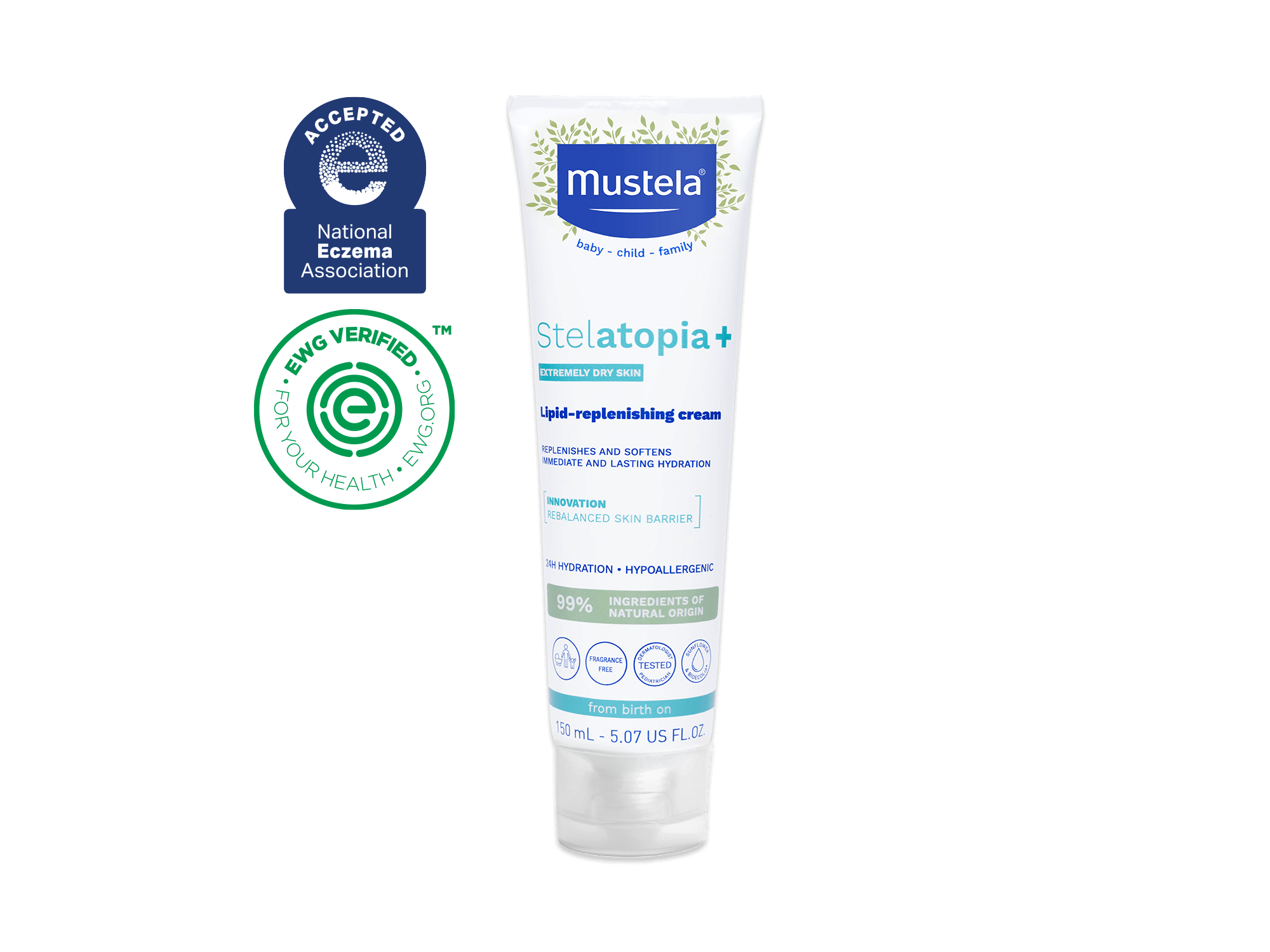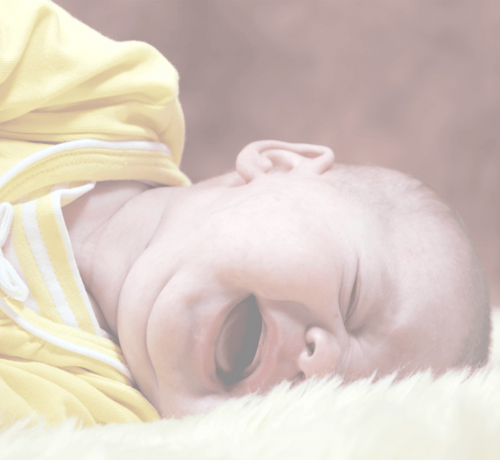Your baby’s skin is rich in potent cells that are at their maximum strength at birth. This unique and valuable resource is also extremely vulnerable during the first few years of life, as the cutaneous barrier is developing. All babies have more fragile, delicate skin than adults. It's finer and more sensitive, and hasn’t fully developed: the protective hydrolipidic film is still very thin, which makes infant skin more vulnerable to harsh external factors (wind, cold, heat, friction, irritating products, etc.).
Some babies have even greater skin sensitivity: their skin has a lower tolerance level, and they react excessively to certain elements that skin can normally withstand. This hypersensitive skin type requires special treatment to preserve its cell strength and restore comfort and softness.
INTOLERANT AND EASILY IRRITATED SKIN
Intolerant skin tends to overreact when exposed to harsh external environments that are normally well tolerated, such as a sharp change in temperature, wind, cold, certain irritating products or even emotional stress.
This sensitivity is reflected primarily in skin discomfort: tightness, prickling and/or tingling, a feeling of heat or even a burning sensation. This discomfort is sometimes accompanied by visible signs, such as temporary redness, dry skin or flaking. All of these are short-lived reactions, and the skin seems normal except during flare-ups brought on by contact with something it does not tolerate well
CONTRIBUTING FACTORS
Numerous factors can trigger a reaction in intolerant and easily irritated skin:
Environmental factors
- Abrupt changes in temperature
- Heat
- Cold
- Wind
- Sun
- Air pollution
Mechanical factors
- Pressure on the skin
- Friction from clothing
External factors
- Certain hygiene products (soaps in particular)
- Perfumes
- Unsuitable washing detergent
- Hard water (too much calcium)
- Baths, showers, swimming pools
Psychological factors
- Anger
- Intense emotion
- Stress: school, family tension
THE CAUSES OF SKIN INTOLERANCE
There are two phenomena that together explain the excessive reaction found in easily irritated skin:
An alteration in the skin’s barrier function
The stratum corneum, the outermost layer of the epidermis, can no longer act as a protective barrier because the lipids that “weld” its cells together are altered. The area between the epidermis and dermis is also weakened. As a result, the skin becomes more permeable and allows potentially irritating substances to enter the body. It is also more prone to dehydration.
A lower level of skin tolerance
At the same time, the skin reacts excessively to any aggression, even if it is harmless, and that reaction results in inflammation.
CARING FOR INTOLERANT AND EASILY IRRITATED SKIN
In most cases, by using special dermo-cosmetic products and following specific personal care guidelines, you’ll be able to reduce the level of reaction in hypersensitive skin.
Be especially attentive to the following issues:
- Only choose dermo-cosmetics products that are specially formulated for intolerant and easily irritated skin in babies and toddlers. These products should contain the fewest number of ingredients possible, with no scents, preservatives or coloring agents. This treatment will help to restore your infant’s altered skin barrier and raise his tolerance level.
- Bathe or shower your baby using lukewarm water (36°C or 97°F), never too hot.
- When washing your child, use very gentle products that are free of soaps, fragrances and preservatives and contain a minimum number of ingredients.
- After each daily bath, apply a soothing moisturizer that is made especially for hypersensitive and easily irritated skin in young children.
- For diaper-changing or washing your baby during the day, use rinse-free cleansing water that offers the same features. Easily irritated skin is often irritated by contact with water (and hard water in particular).
In addition to caring for your child’s skin, it’s essential that you monitor the environment so as to limit contact with potential triggers:
- When the weather is cold, moisturize your baby’s skin with an appropriate cream and protect sensitive areas before going out (with a hat, scarf, mittens, etc.).
- Avoid exposing your baby to abrupt changes in temperature.
- Avoid sun exposure for your baby. If you can’t prevent your baby from being in the sun, always apply SPF 50 sunscreen designed for a baby’s sensitive skin, combined with protective clothing (T-shirt, hat, sunglasses, etc.).
WHEN SHOULD YOU SEE A DOCTOR?
If your baby has very frequent and/or severe skin reactions, or they do not diminish after several weeks of following the guidelines listed above, consult your physician or dermatologist: he or she can prescribe appropriate treatment and possibly identify an allergic source of your child’s skin problems, especially if the symptoms (discomfort, tightness, rash, etc.) are permanent and do not go away.




















